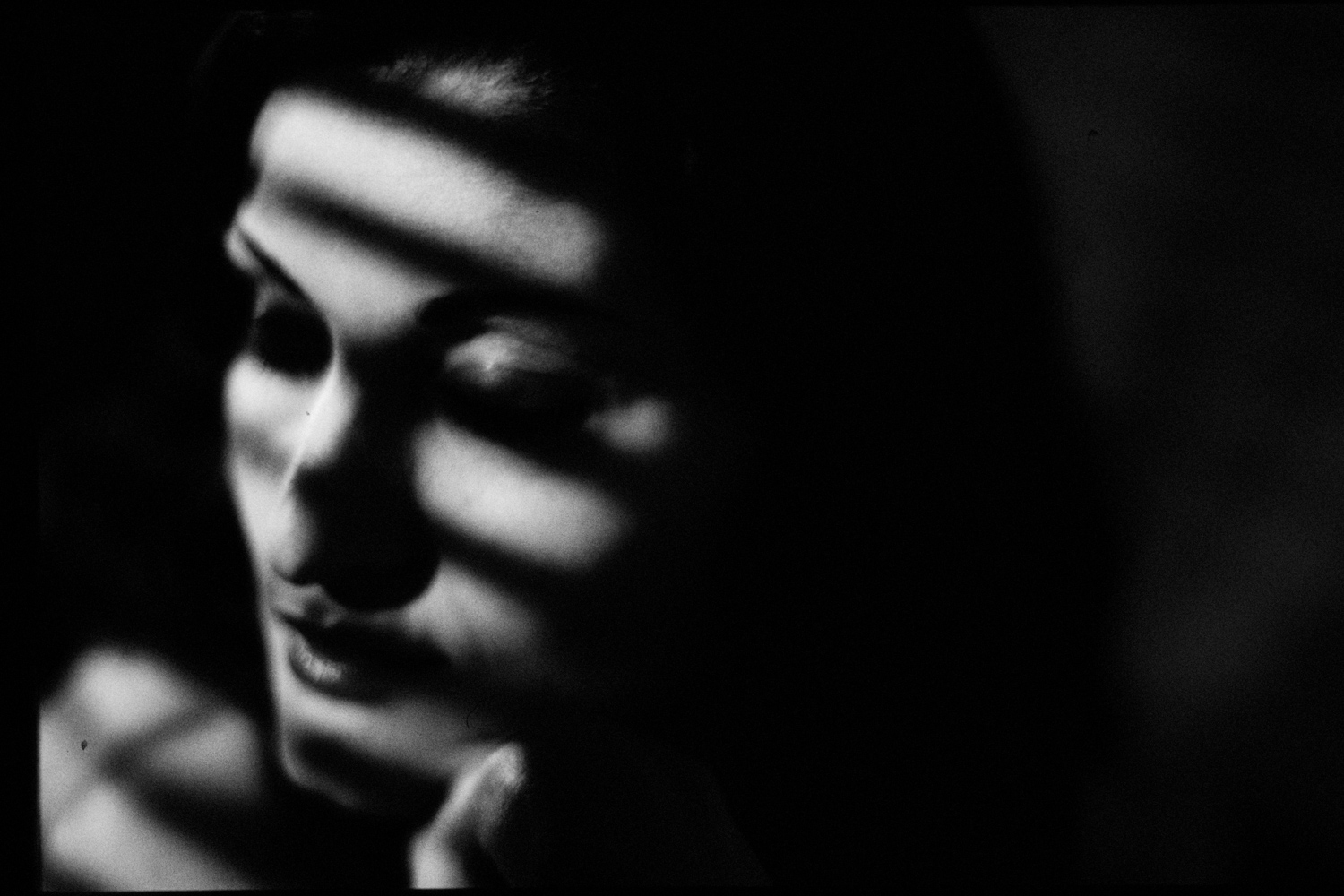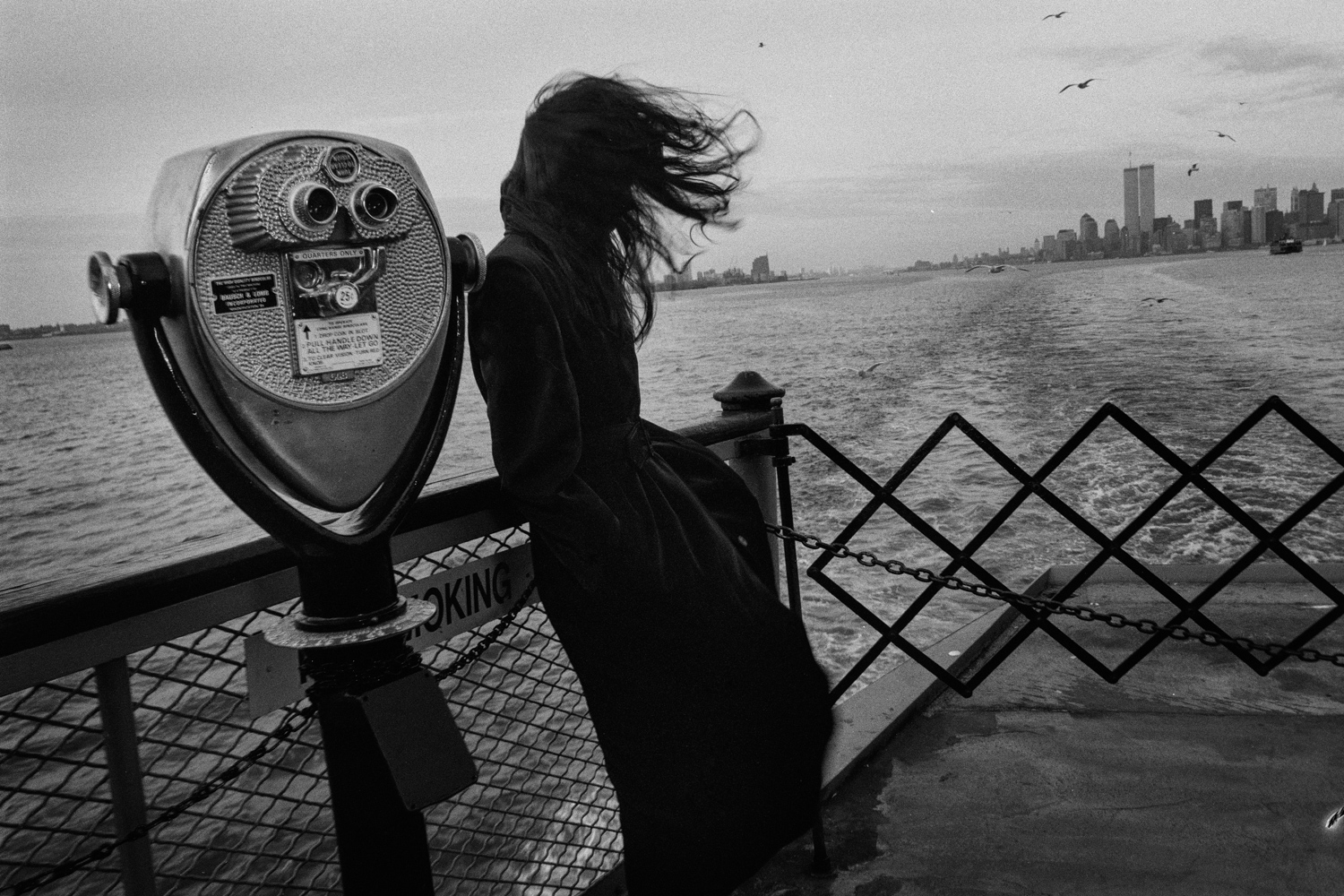The Stylist of Reality exhibition presents an exciting cross-section from the most important phases of Venzago’s extensive oeuvre. In addition to shots from his legendary series dedicated to the Japanese Yakuza, and the Voodoo cult in Benin, many portraits and personal works are currently on display in Wetzlar.
These works underline, time and again, the photographer’s precision and sensitivity when capturing his motifs, though chance can also play a role at times. In our interview with the photographer, he shared some insight into certain photographs.
You share a friendship of many years with Tina Turner, who lives quite close to you.
We’ve been working together for a few years, and it’s special every time I meet her. This portrait is my absolute favourite picture of Tina. It was taken immediately after a session with her in her Buddhist meditation room. I filmed her as she was reciting or, better said, singing two mantras into the camera for me. I was so struck by the force of the presence, so I whispered to Tina and asked her to stay like that for a second. It was total stillness. I hardly dared trigger the camera. I pressed it three times. She remained motionless. She took me on the journey.
You also seem to have got very close to the German director Rainer Werner Fassbinder…
I met him during the filming of his last movie. It was a strange situation. This picture was taken during an early conversation, when he suggested to me: “If you want to get a really great picture, let’s do something different.” Then he lay down on the floor, wearing his hat and sunglasses, his glass of beer beside him. The light fell through the blinds onto his face, just as he likes to have in his movies. Then he said, “That’s how they’ll find me.” I took the picture. And that was exactly how they found him, when he died that same year; just like he’d shown me. I had photographed his premonition. However, the photograph no longer exists. At some point, the film disappeared in the Magnum Agency and never turned up again. But I still see the image in my mind, in my heart, in my soul – a picture I will never forget, even though it no longer exists. So I consider this photo taken five minutes earlier is just a substitute, a memory of the lost image.

The interplay of light and shadow has a lot of meaning for many of your motifs…
Yes, I love this light. A homage to the films of the 1940s, full of magic. A large part of the picture remains in darkness, and each viewer can come up with their own ideas about it. This motif doesn’t belong to a commissioned work; Ottilia is a colleague. The picture just happens to have been taken in my studio. I’m like a pianist, who has to practise finger movements every day – I still take pictures every day.

This picture also thrives on the lighting and an intense atmosphere…
I love the light in New York. You have this incredibly strong light and strong contrasts. It’s like life in the city – the contrasts between rich and poor, between above and below, between light and shadow, light and dark. The picture was taken for an album cover. Lisa was a singer, and I didn’t want to work in the studio; instead, I took the portrait outside. I like her expression; with beautiful light and a beautiful face, the photographer is gifted with an image.

Another signpost, but in a completely different part of the world. This time with an almost philosophical statement…
Yeah, you can interpret it in any manner of ways. A ‘road to nowhere’ or whatever. I was on my way from Israel to Egypt at the time – by road, once the border had reopened. I drove to the border in a taxi; then I had to walk for about 80 metres, loaded with all my luggage; and on the other side was an old Mercedes, which then took me to Cairo. On the way, I suddenly saw this signpost. At the time, it represented my inner sensitivity – I was lovesick – and I simply had to take a picture of it.

How did this picture come about?
I was living in New York at the time, and was doing a commercial campaign for a fashion label. I wasn’t interested in fashion in the slightest, but I was in style. I simply wanted to show New York a little differently. In this case, chance came into play again, when I saw the tower viewer and the model on the ferry, side by side. It was freezing cold. Looking back, I notice the Twin Towers far more – a former symbol of New York that no longer exists. As a result, I now see a second level to this picture. You can interpret a lot in this picture – and I like that.

How big a role does chance play in your pictures?
This picture was taken at Art Basel Hong Kong. I tramped around the fair all day, and then I saw this scene. The picture was taken by a photographer from Singapore, and then came this incredible moment with the bald-headed man. The perspective is just right; the size ratio is not; and yet, precisely because of this, the picture works. René Burri, with whom I lived together in Paris for four years, was one of my mentors. Once, he said to me: “You know, if you want to do this kind of photography – in other words, street photography – then make sure you have a good background. Then you simply wait.” This is how the greatest pictures come about. Here again we see a gift of an image, created out of the moment.
The Swiss photographer, photojournalist and filmmaker, Alberto Venzago, was born in Zurich on February 10, 1950. In his mid-twenties, after studying Remedial Education and Clarinet, he decided to become a self-taught photographer. Success came quickly. He worked for Magnum Photos for four years; and his work was published in Life, Stern, and Geo. He moves effortlessly between photojournalistic documentation, free artistic work, and commercial photography. He has received many awards for his work, including the renowned ICP Infinity Award. Venzago lives and works in Zurich. Find out more about his photography on his website.
The exhibition Alberto Venzago – Stylist of Reality will remain on display until May 14. For information and opening hours visit the website of the Ernst Leitz-Museum.
Issue 4/2021 of the LFI magazine carries a comprehensive portfolio of Alberto Venzago’s work.
The accompanying monograph, Taking Pictures, Making Pictures, has been published by Steidl Verlag.








Comments (0)